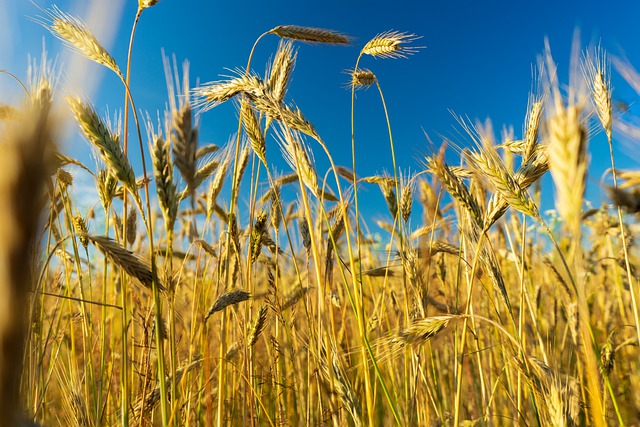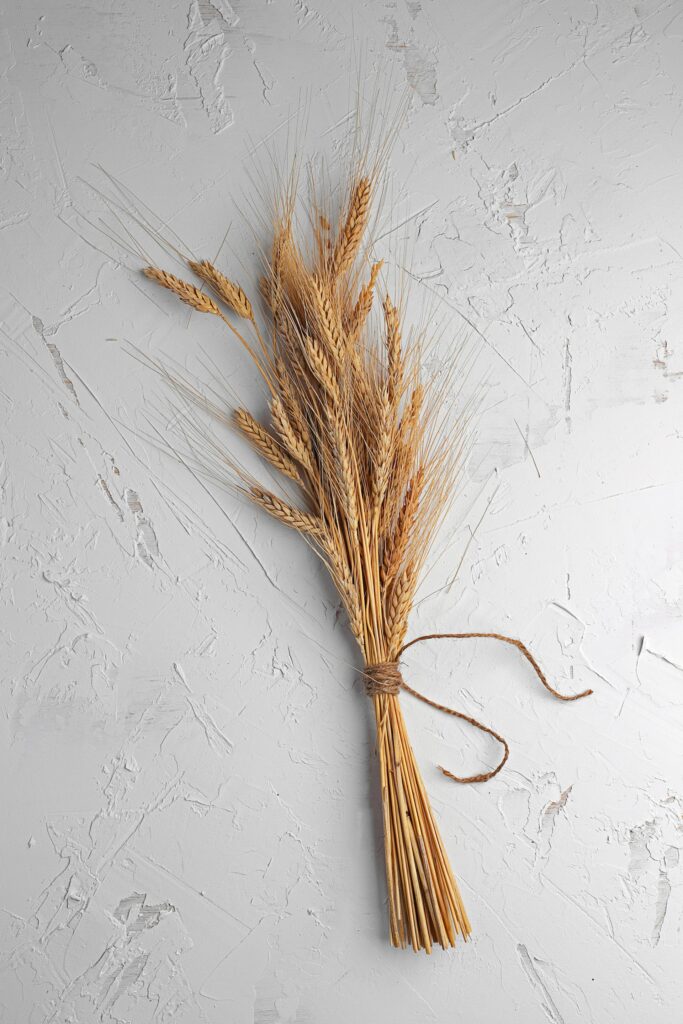Introduction – Yes, Wheat Is A Renewable Resource
Today we’re going to talk about an unusual thing: the renewability of wheat. Is wheat renewable or nonrenewable? In fact, wheat is a renewable resource because it can be grown and harvested repeatedly. It is not a finite resource like fossil fuels, which take millions of years to form and cannot be replaced once they are depleted. Wheat is a renewable resource because it is a type of plant that can be grown and harvested over and over again. Other types of renewable resources you might have heard of are: wind, solar, bamboo, wood. Yes, even wood is renewable because it can be grown and harvested over and over again. Note that the meaning of renewability is not the same as sustainability.

Why Care About Whether Wheat Is Renewable?
There is one very important reason to ask whether wheat is renewable or not. Wheat is actually used as a source material for biofuels. Wheat has been used as a biofuel in some parts of the world, such as in the UK and in parts of India, as a source of renewable energy. The straw from wheat can be used to create a type of biofuel known as wheat straw pellets, which can be used in place of coal or oil to generate energy. The use of wheat as a biofuel offers several potential benefits.
It is a renewable source of energy, meaning it can be produced in large quantities without depleting natural resources. It is also relatively low in emissions, making it a more environmentally friendly option than traditional fossil fuels. Furthermore, the use of wheat as a biofuel can provide a beneficial use for the agricultural by-products that would otherwise be wasted. Finally, the use of wheat as a biofuel has the potential to reduce the overall cost of energy production.
Wheat is used for a variety of other purposes, including making flour for bread, pasta, and other baked goods. It is also used to make cereals, crackers, and other snacks, and it is used as a thickening agent in soups and sauces. In addition to its culinary uses, wheat is also used for livestock feed, as well as for making biofuels, such as ethanol. It is a versatile grain that is widely used in many different industries.
What Is Wheat
Wheat is a type of cereal grain that is grown on a global scale. It is a staple food for many people around the world, and it is used to make a variety of products including bread, pasta, and flour. Wheat is a type of grass that is grown in fields, and it is harvested for its seeds, which are ground into flour to make bread and other baked goods. It is a widely cultivated crop and is an important source of nutrition for people around the world.
The earliest evidence of wheat cultivation dates back to the Neolithic period, around 8000-9000 BCE. This is based on archaeological findings of grains of wheat in the Fertile Crescent region of the Middle East, where it is believed that wheat was first domesticated. Wheat was an important crop for early human societies, and it was widely cultivated in many different parts of the world. Over time, various types of wheat were developed, and it became a staple food for many people. Today, wheat is still an important crop, and it is grown on a global scale.
How Is Wheat Grown

Wheat is grown by planting seeds in prepared soil. The seeds are typically sown in the fall and the plants begin to grow in the spring. Wheat is a type of grass, so it grows best in warm, sunny climates with well-drained soil. As the plants grow, they produce long, green leaves and eventually develop heads of wheat, which are covered in small, edible seeds. When the heads are ripe, they are harvested using a combine harvester, which cuts the heads off the plant and threshes the seeds from the straw. The seeds are then cleaned and stored until they are ready to be used or sold.
Scale Of Wheat In The US and The World
According to the US Department of Agriculture, an estimated 48.1 million acres of wheat were harvested in the US in 2020. According to the Food and Agriculture Organization of the United Nations, wheat is the most widely grown cereal crop in the world, with an estimated total production of 774 million metric tons in 2019.
In fact, the top 5 leading producers and exporters of wheat globally are:
- China: Although China is the largest producer of wheat, much of its production is used domestically and thus it is not a major exporter.
- India: Similar to China, India produces a significant amount of wheat, but the majority is consumed domestically.
- United States: The United States is one of the largest exporters of wheat. The majority of wheat production occurs in the Midwest and Great Plains.
- Russia: Russia has become one of the largest wheat exporters in recent years. The majority of Russian wheat is grown in the country’s vast steppes.
- Canada: Canada is a major exporter of wheat, particularly of durum wheat used for pasta. The majority of Canada’s wheat is grown in the Prairie Provinces.
What Are Renewable Resources
You might wonder why is wheat renewable. Then it bears understanding what is a renewable resource. A renewable resource is a natural resource that can be replenished or regenerated over time. Examples of renewable resources include things like solar and wind energy, as well as plants and animals that can be grown or raised sustainably. Renewable resources are important because they provide us with a way to meet our needs without depleting our finite resources, such as fossil fuels. By using renewable resources, we can ensure that we have a sustainable source of energy and materials for the future.
What Are Non-Renewable Resources
A non-renewable resource is a natural resource that cannot be easily replenished or regenerated. Examples of non-renewable resources include fossil fuels such as oil and coal, as well as minerals like gold and copper. These resources are called non-renewable because they take millions of years to form, and once they are depleted, they cannot be easily replaced. Unlike renewable resources, which can be sustainably harvested, non-renewable resources are finite and will eventually run out if we continue to use them at the current rate.
Conclusion – Is Wheat Renewable Or Non-Renewable
So there you have it. Wheat is a renewable resource because it can be grown and harvested repeatedly. It is not a finite resource like fossil fuels, which take millions of years to form and cannot be replaced once they are depleted. Wheat is a type of plant that is grown in fields, and it is harvested for its seeds, which are ground into flour to make bread and other baked goods. It is an important source of nutrition for people around the world, and it is used in a variety of industries. Because it can be grown and harvested over and over again, wheat is considered a renewable resource.
